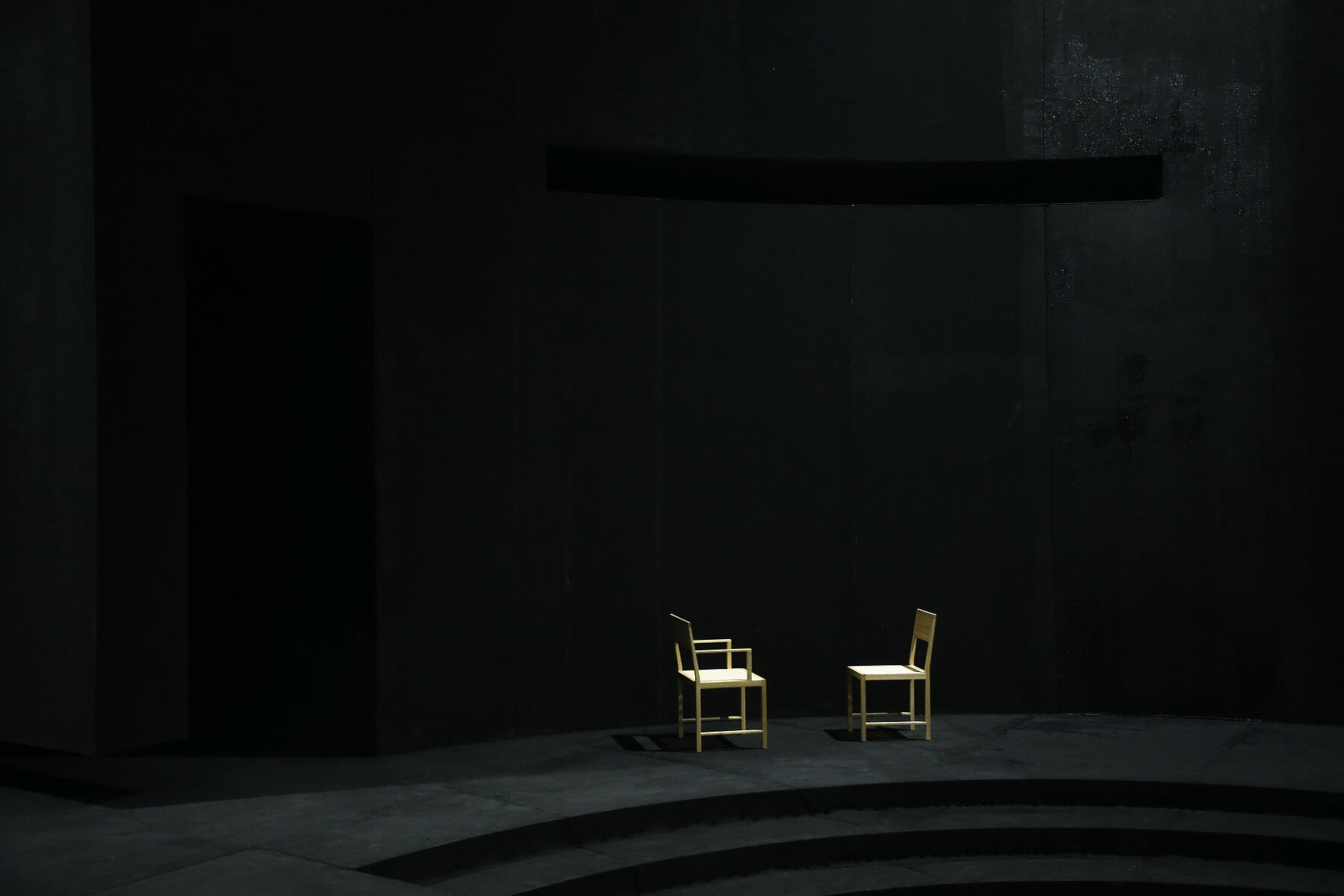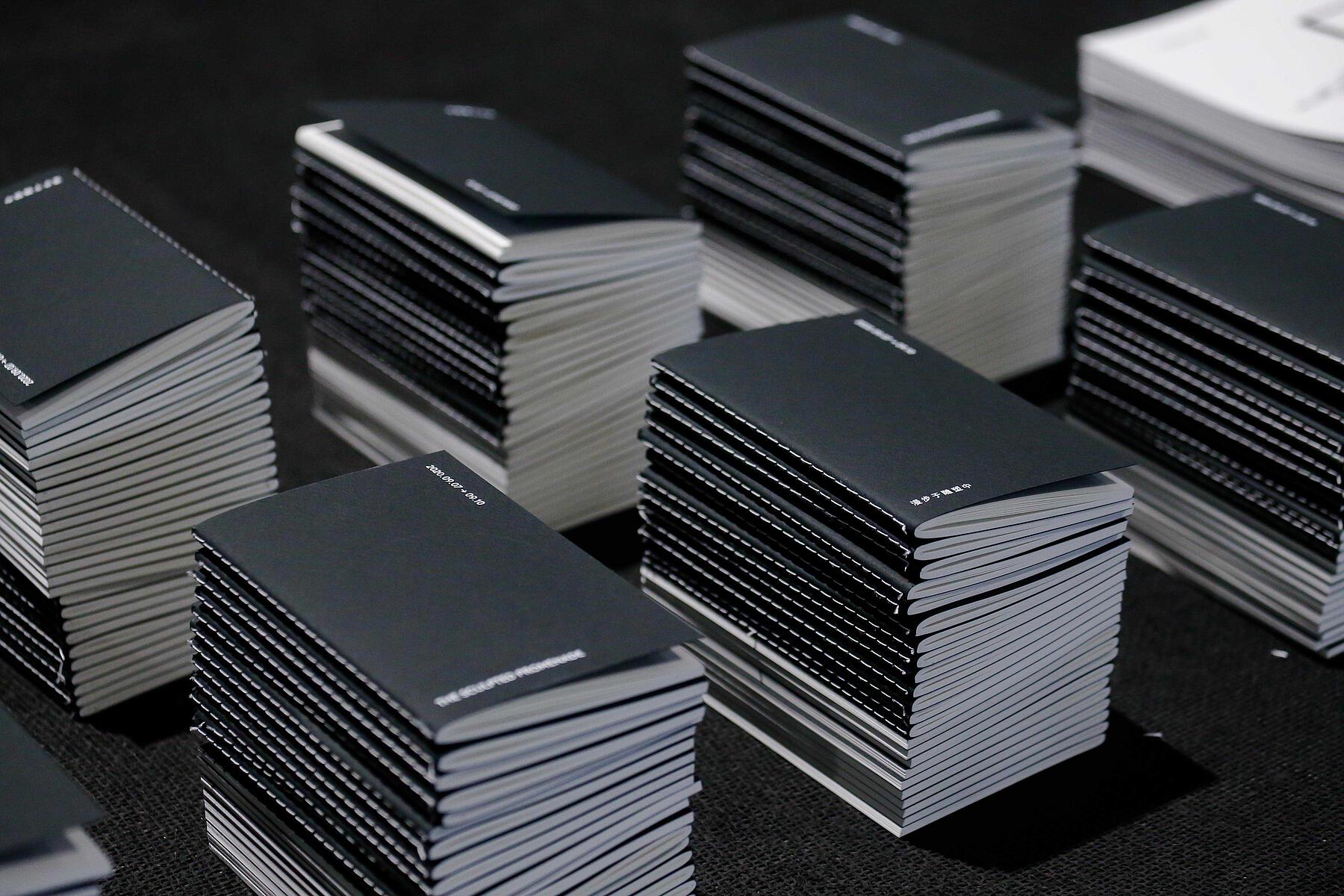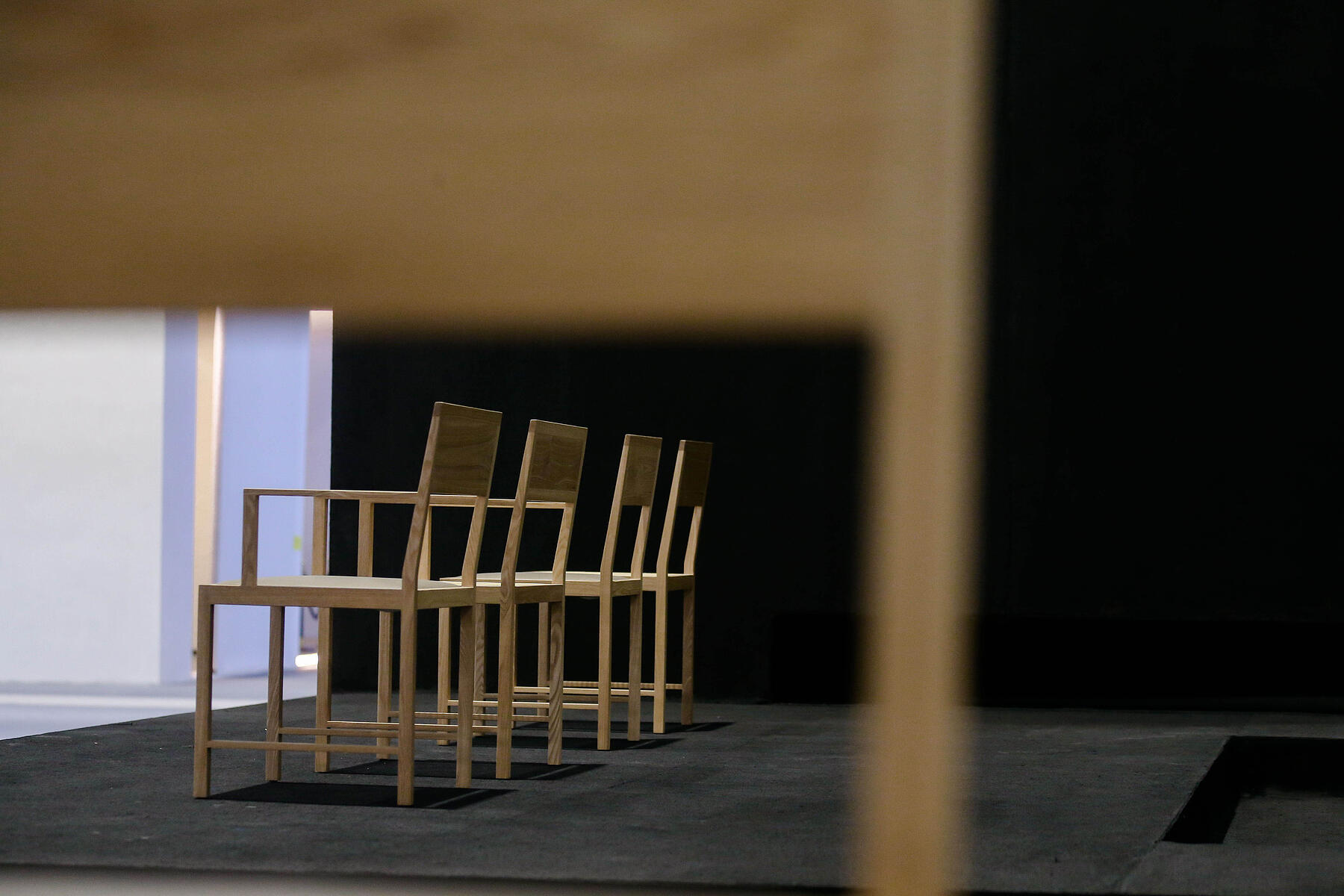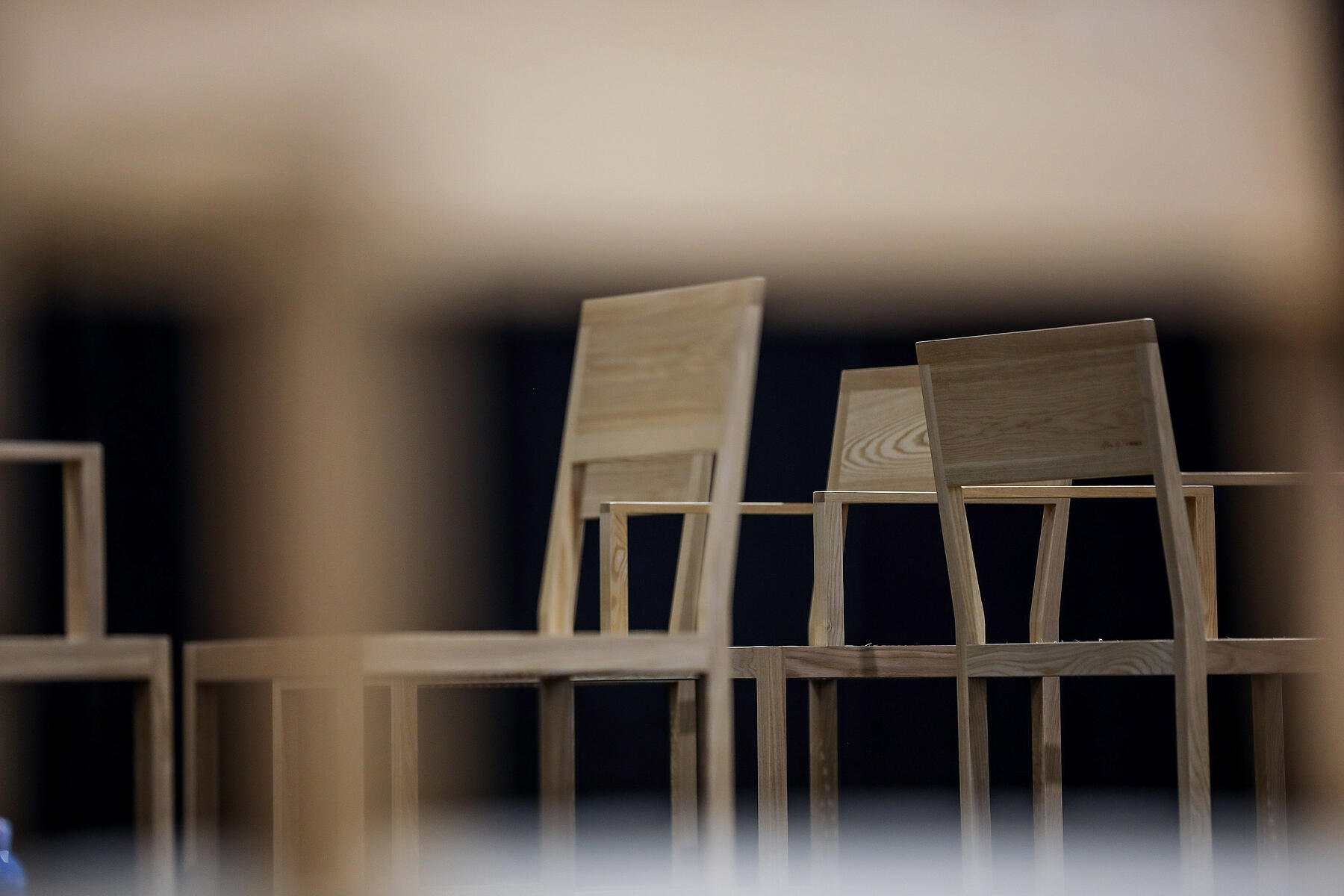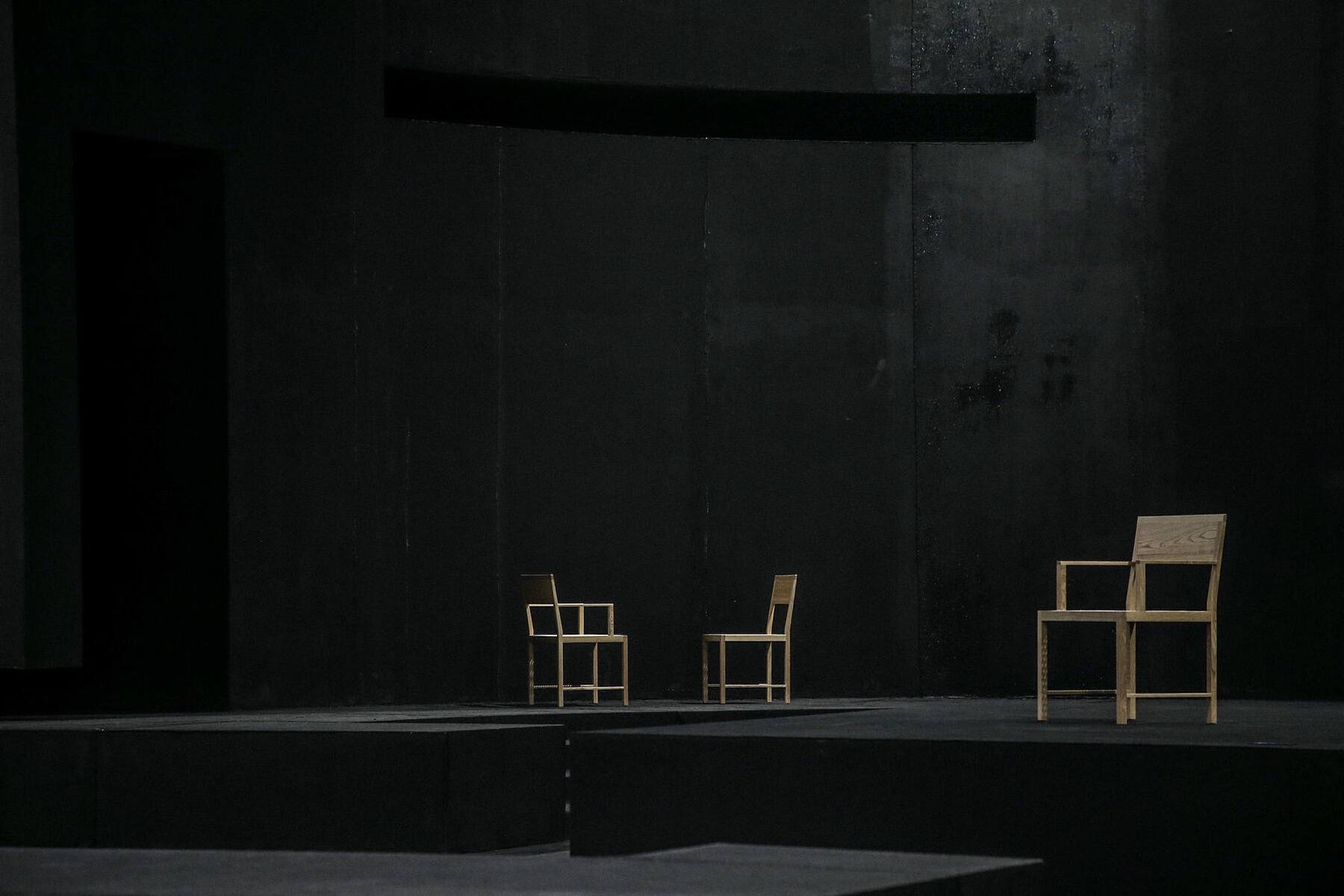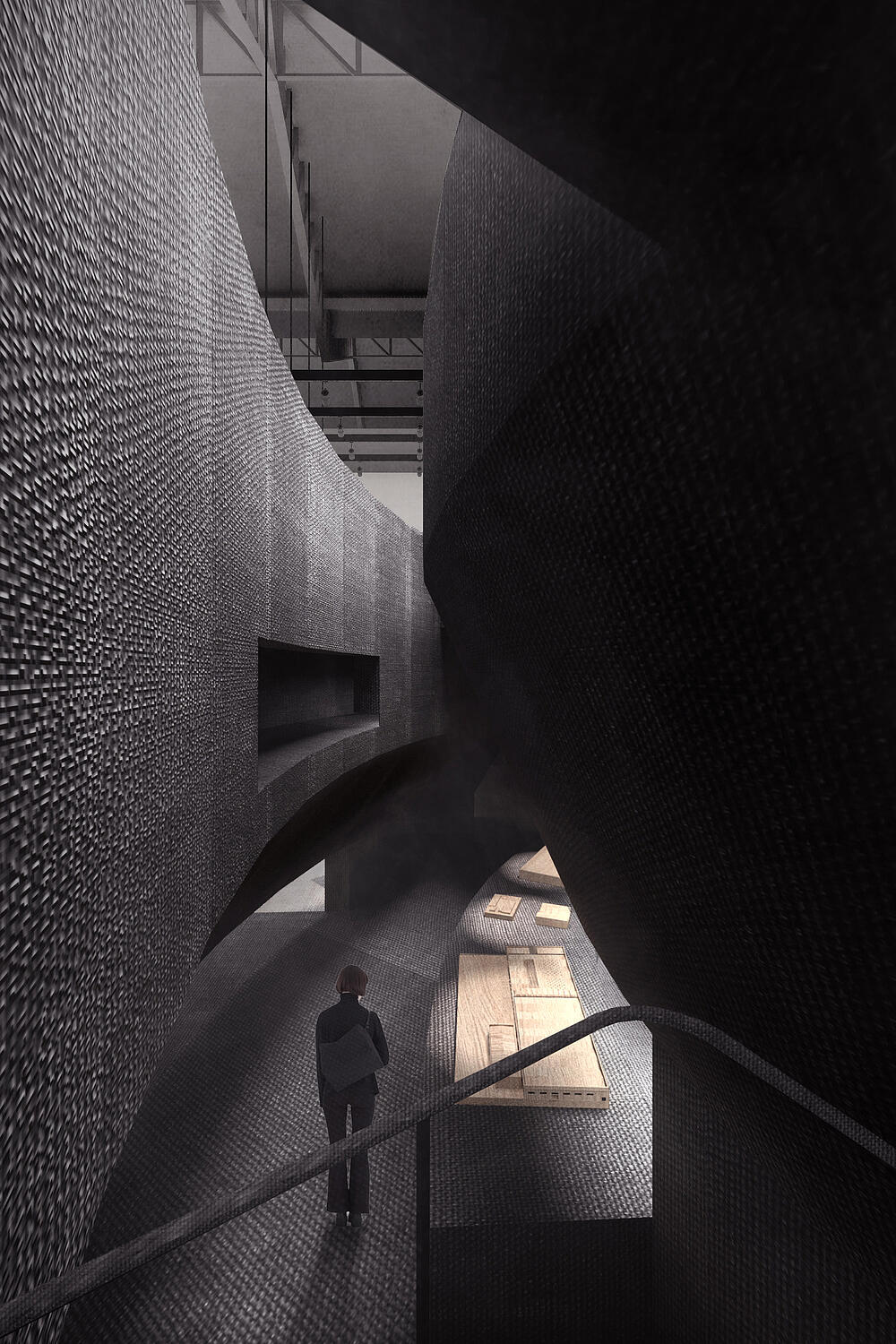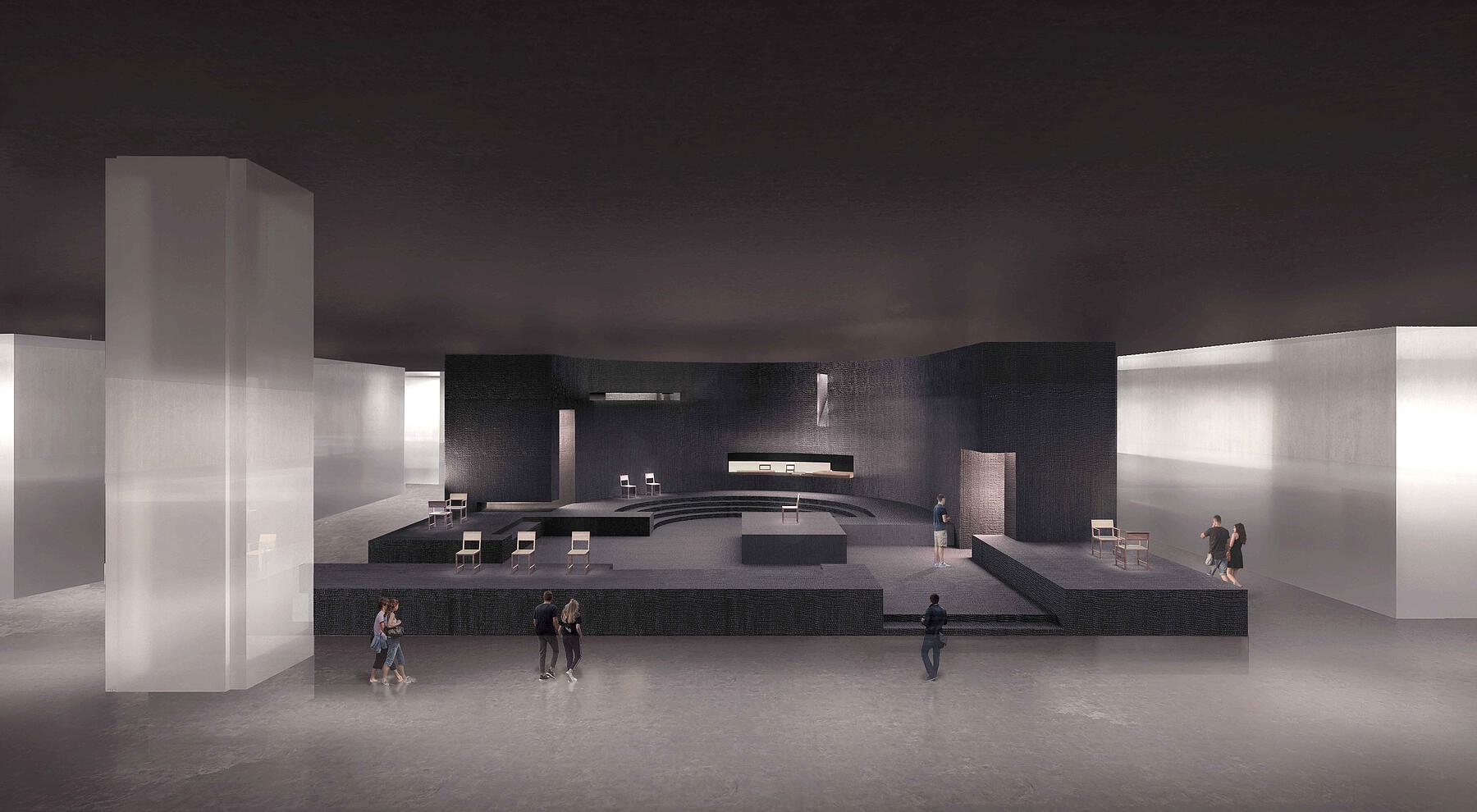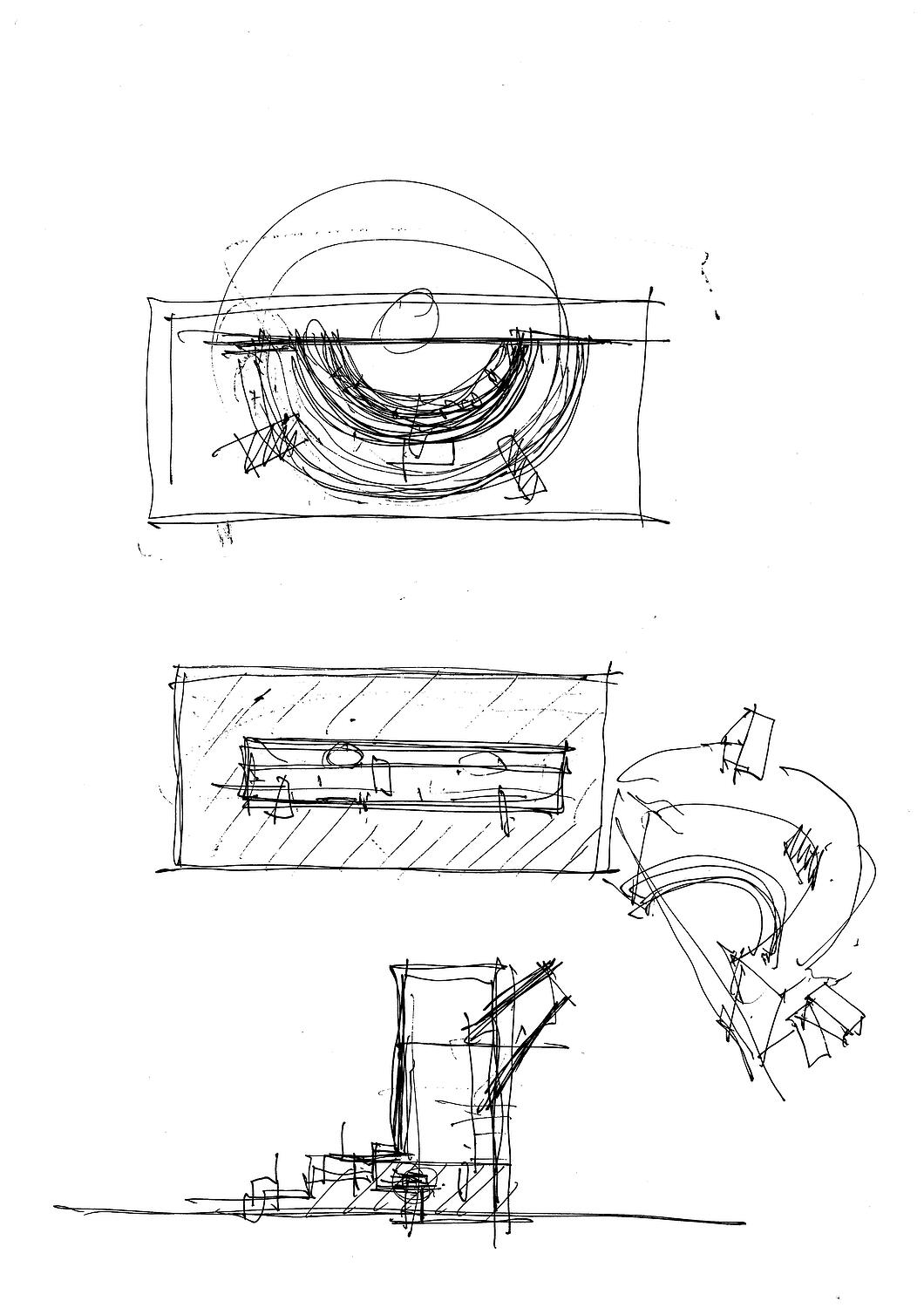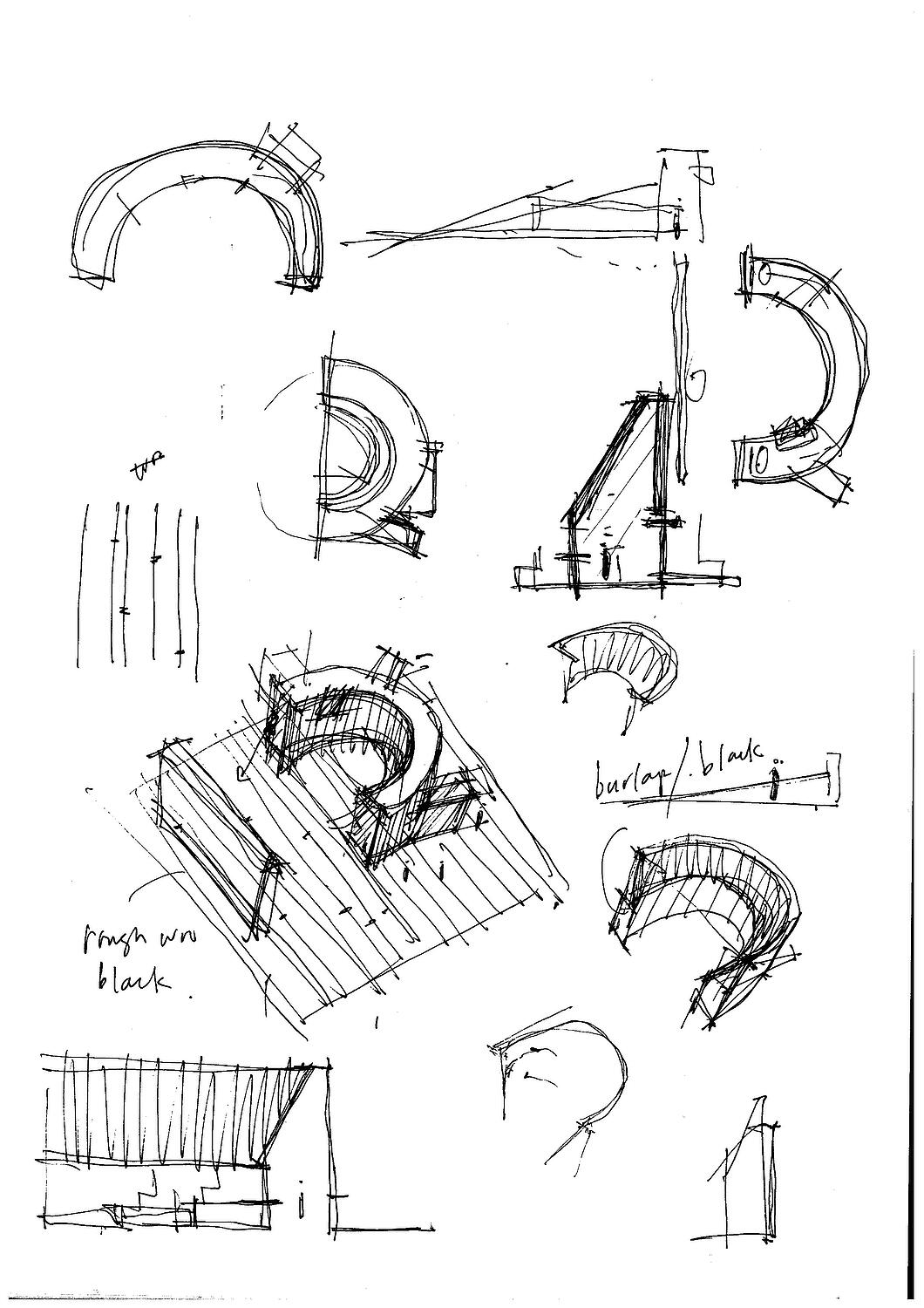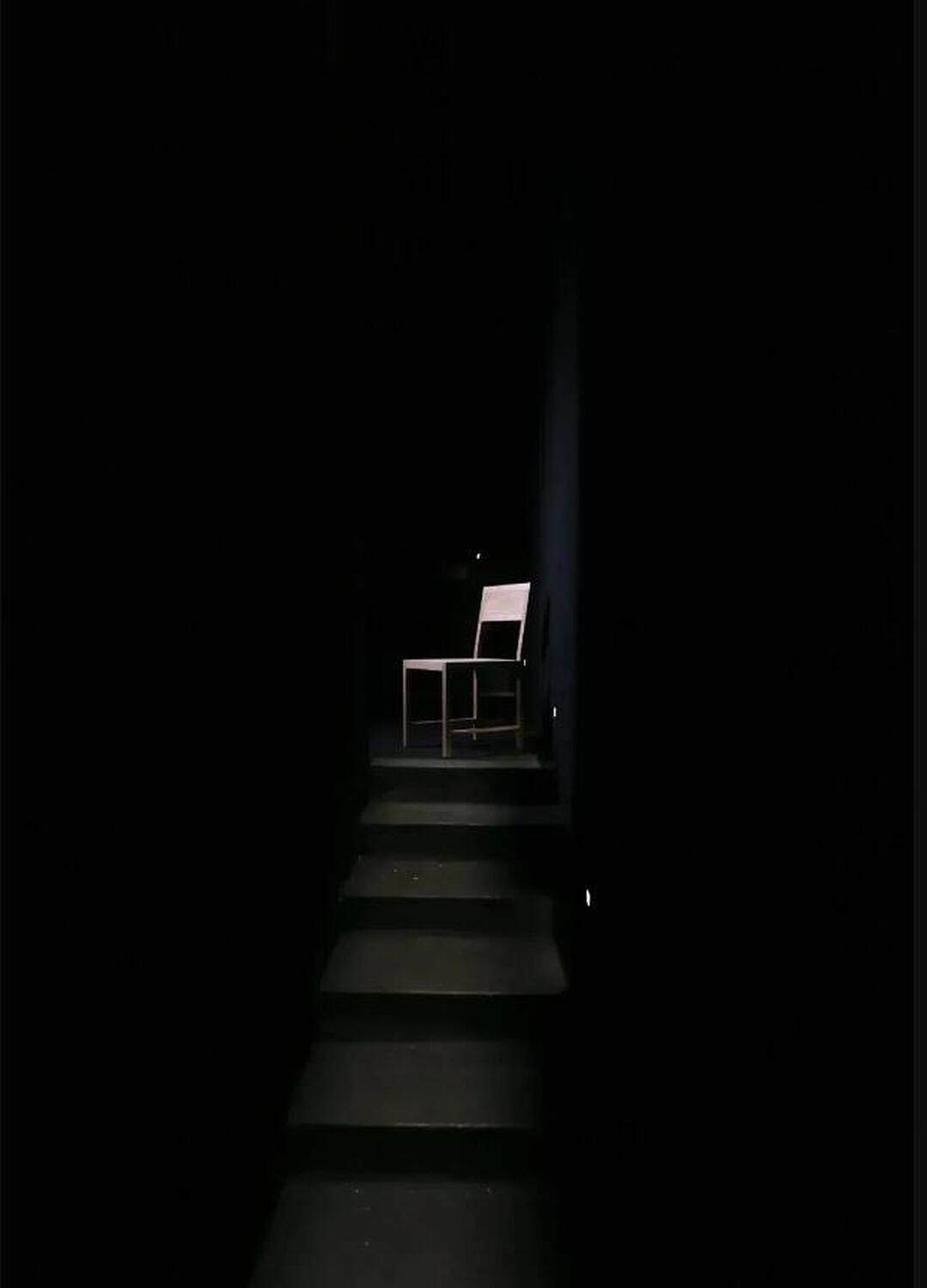The Sculpted Promenade | Camerich Exhibition Shanghai CIFF
Gross Area
572m²
Status
Complete
Completion Date
August 2020
Display Date
September 7th – September 10th, 2020
Address
Hongqiao National Exhibition and Convention Center, Shanghai
The exhibition design began with certain reflections on Alvaro Siza’s body of works. Influential to generations of architects in his home country of Portugal and beyond, Siza endows his architecture with a new sensibility and emotional qualities. By using simple, often pre-existing architectural elements, he transforms one’s expectations of spaces. Through his design, we come to have a deeper understanding of the modern conditions in which we live in.
The Baiana Chair, designed by Siza for the global furniture brand, Camerich, carries the spirit seen in many of his well-known architectural works. As the sole product that the brand has chosen to showcase at this year’s China International Furniture Fair (CIFF) in Shanghai, the chairs, their positions in space, and relationships to the viewers are the main focus of the Neri&Hu exhibition design.
To celebrate the Baiana Chair and its role in many settings, we created a generous open space where, like on a public plaza or terraced landscape, people can freely move about, take repose, or mingle in groups. This open setting for both the exhibited objects and the viewers, with its geometric forms and homogeneous material presence, shares intellectual roots with concepts in Chinese gardens. The proto-cinematic experience found in Chinese gardens can also be found in much of Siza’s works which celebrate the architectural promenade, wherein vignettes unfold like in moving images.
In contrast to most classical Western paintings which are based on mimesis, Chinese literati paintings aim to capture the spirit of the object depicted, filtered through the lens of abstraction. Evoking the artist’s inner landscape precedes imitation or approximation to nature. In particular, the technique of jiejing or “borrowed scenery,” frequently found in Chinese gardens, offers novel ways of seeing that challenge conventional ideas about viewing that are originated from the West, such as visual depth, boundaries and viewpoints.
When viewed from the outside perimeter, the chairs appear to be works displayed atop a pedestal, clearly elevated above the spectators. But as soon as one steps onto the platforms and is drawn closer to the objects, the privileged status of the chairs seems more ambiguous, and starts to suggest scenes at home or on stage, depending on the multitude of personal history that the visitor brings. Rather than drawing a sharp distinction between the objects on display versus the spectator, the design promotes a blurring of these roles; based on one’s vantage points and proximity to the furniture pieces—as singular, isolated pieces or grouped in an ensemble—the chairs and viewers both take on the roles of the characters in an unfolding scene of a play.
The dynamic exchange between movement and scenography entices one to continue exploring the pavilion-like structure behind. Apart from the large horizontal window at the center and other thinner openings, the volume maintains a solid, monolithic appearance. Through entries at the two ends, one first encounters the Reading Room, an introverted, dimly lit space in an otherwise hyperactive furniture fair. In front of the built-in tiered seating, Camerich’s plans for future growth and production are shown on screens, illustrated through works by Neri&Hu and ZAO/standardarchitecture. At the top of the tiered seating, the visitor finds an unexpected oblique view down to the Gallery below, as well as the start of a gently curved corridor. In the Gallery, architectural scale models of the proposed Camerich factory design in Beijing and Jiaxing are revealed. Above the display models, the formidable monolith is eroded with large fissured-voids, whose chiseled forms evoke canyons or caves in the natural world. Contained within the carved mass is a curved corridor which bridges the two Reading Rooms, while also providing glimpses into the Gallery as well as the back to the open plaza.
Sharing similarities but not to be conflated with voyeurism, jiejing departs from the conventional Western notion of voyeurism which is associated with regimes of control and surveillance, focusing instead on the revelatory vantages gained by the nomadic inhabitant. Borrowed views throughout the exhibition defy our accepted norms of viewing, montaging the experiences of one’s inner landscape within carefully curated architectural scenes.
